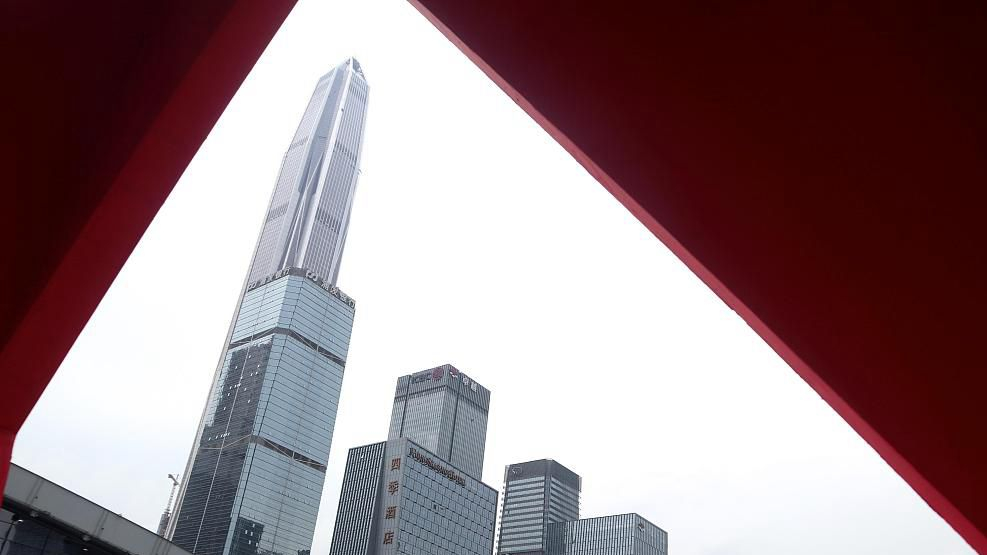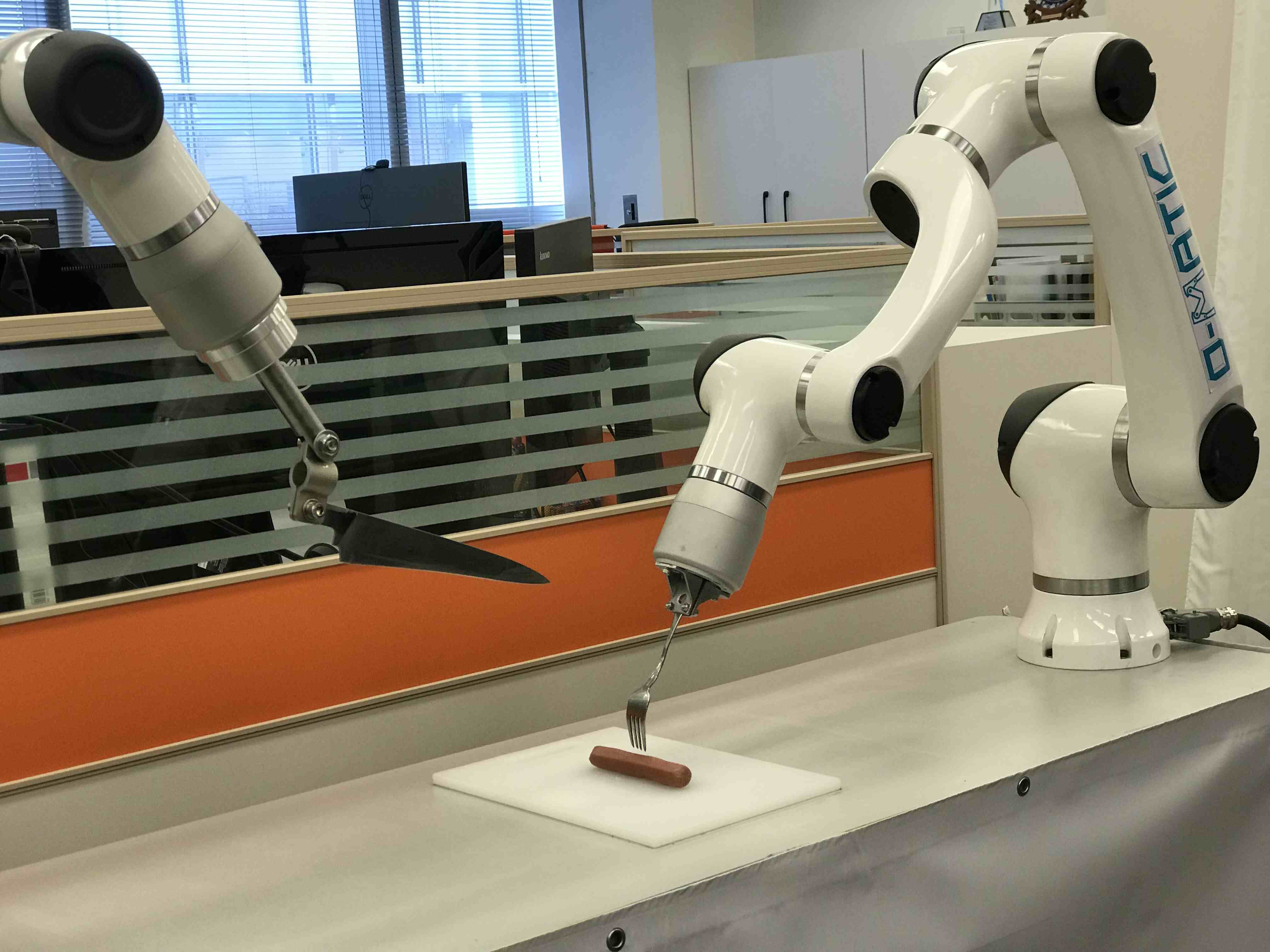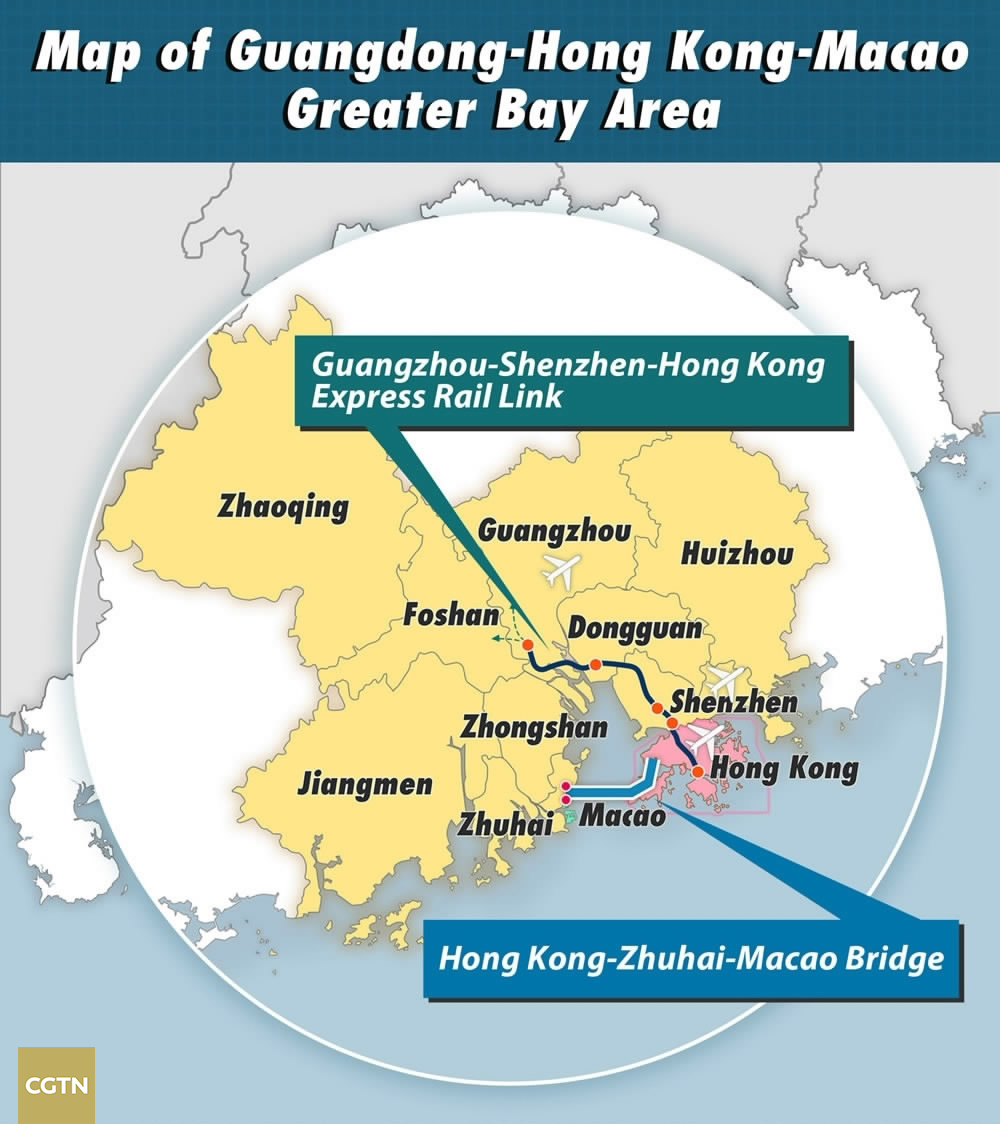
Money Stories
17:31, 18-Feb-2019
Greater Bay Area offers opportunities to Hong Kong
Li Jiejun

O-Matic, a company manufacturing robots mainly used to paint and weld on construction sites, has set up a production line in Foshan, south China's Guandong Province, and a research center in Hong Kong. This model may represent integration in the Hong Kong-Macao-Guangdong Greater Bay Area.
“Foshan is close to Hong Kong, but with much lower labor cost. While in Hong Kong, we are close to all the clients. That's why I chose Foshan as the manufacturing base and Hong Kong as selling office”, said Carlos Lee, CEO of O-Matic.

O-Matic's robot arm cuts sausage. Photo/CGTN
O-Matic's robot arm cuts sausage. Photo/CGTN
The Greater Bay Area is China's vision for an interconnected Pearl River Delta region.
By linking Hong Kong, Macao and nine other cities in Guangdong Province in an integrated economic and business hub, it will be the world's fourth largest bay area, following those in San Francisco, New York, and Tokyo.
Compared with the other three counterparts, the Guangdong-Hong Kong-Macao Bay Area has the largest population: 50 to 60 million.
And it is the only one that continues to stress industrial development.
“It can become a global leader in innovation and technology center,” said Thomas M. H. Chan, professor of Chu Hai College of Higher Education.
However, while it is within one nation, the bay area links two economic and administrative systems, three currencies and multiple cities. Such complexity could pose great challenges.

Source: CGTN
Source: CGTN
“These problems cannot be solved through the market. It involves tax laws, about cross-border mechanisms. The difficulty is almost like WTO or any regional trade agreement”, Xiao Geng, a professor at Hong Kong University, told CGTN.
Analysts say the key is to create a coordination mechanism between the central government and the cities involved.
Hong Kong Chief Executive Carrie Lam said recently that fierce competition between the 11 cities should be avoided as far as possible. Instead, cities should leverage their competitive advantages to seek better development.
Observers say Hong Kong remains the region's financial powerhouse but the city has to grasp the opportunities to diversify its economic structure, and transform itself into an innovation and technology hub.

SITEMAP
Copyright © 2018 CGTN. Beijing ICP prepared NO.16065310-3
Copyright © 2018 CGTN. Beijing ICP prepared NO.16065310-3